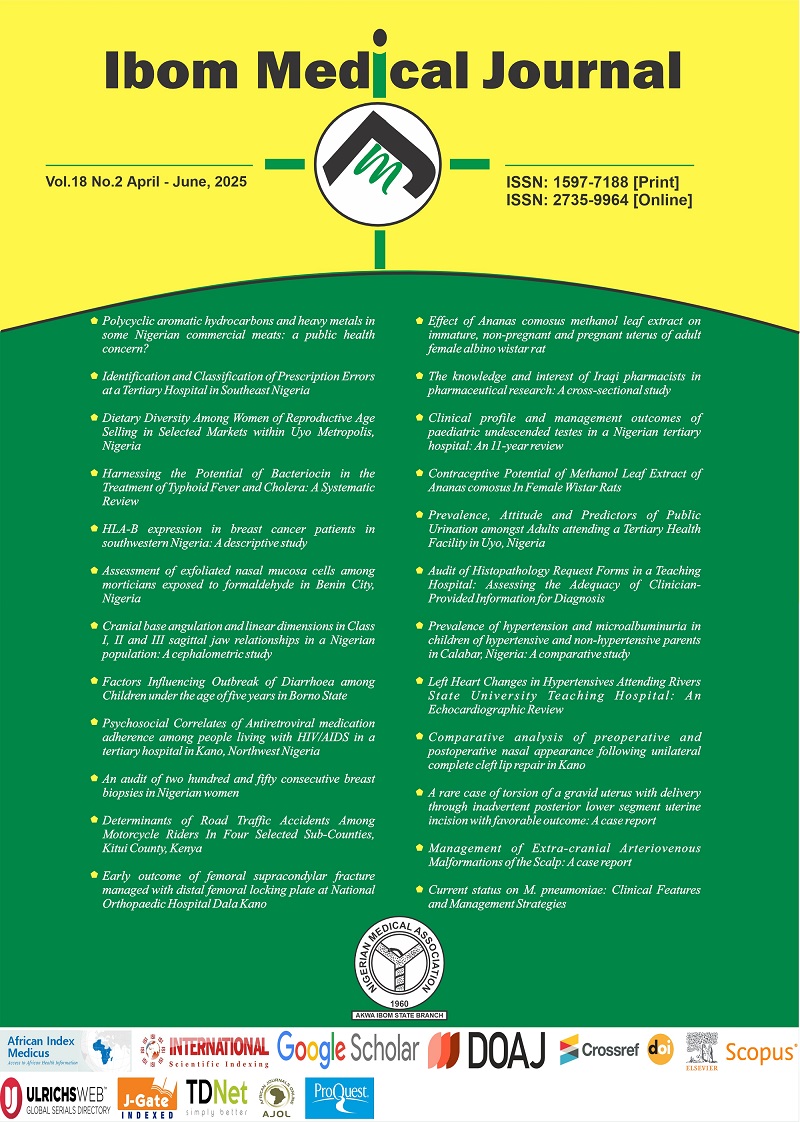Early outcome of femoral supracondylar fracture managed with distal femoral locking plate at National Orthopaedic Hospital Dala Kano
DOI:
https://doi.org/10.61386/imj.v18i2.670Keywords:
Early outcome, Femoral supracondylar fracture, Distal femoral locking plate (DFLP)Abstract
Background: Supracondylar fractures of the femur cause considerable morbidity and mortality especially in the elderly.1 The incidence was found to be higher among the younger socioeconomically active groups.1 Surgical treatment of this difficult fracture is a challenge due to the need for anatomic and functional restoration of the fracture fragments.
Improved implant instrumentation and extensive surgical experience have made operative treatment the standard cure for the management of the fractures.2
This study looks at the early outcome of supracondylar fractures in adults treated with the Distal Femoral locking plate at National Orthopedic Hospital Dala, Kano.
Methodology: This study had a prospective descriptive design and was conducted among forty two (42) eligible patients over a 19 months period. Patients were followed up for six (6) months. Functional surgical outcome was assessed using Schatzker and Lambert criteria. Data of 39 patients was analyzed using SPSS version 20.0 with a p - value of 0.05. Three patients were lost to follow up.
Results: The mean age of the study participants was 34.64 ± 9.74 years with a male preponderance of 82.1%. Road traffic accident was the commonest cause of injury. The common fracture patterns were AO muller A1 and A2; 28.2% each. Normal knee extension was recorded in all the patients.
About 53.8% of participants had knee flexion of 120o - 130o . No varus or valgus deformities were recorded. Persistent pain as post-operative complication was recorded in 15.4%. Satisfactory outcome was recorded in 97.4% and fair in 2.6%.
Conclusion: The study revealed that femoral supracondylar fracture is common among young active males. Promising outcome was recorded in patients treated with distal femoral locking plate.
Downloads
Published
License
Copyright (c) 2025 Tsoho SA, Abubakar K, Awomusi FO, Usman MI, Muhammad S

This work is licensed under a Creative Commons Attribution 4.0 International License.










